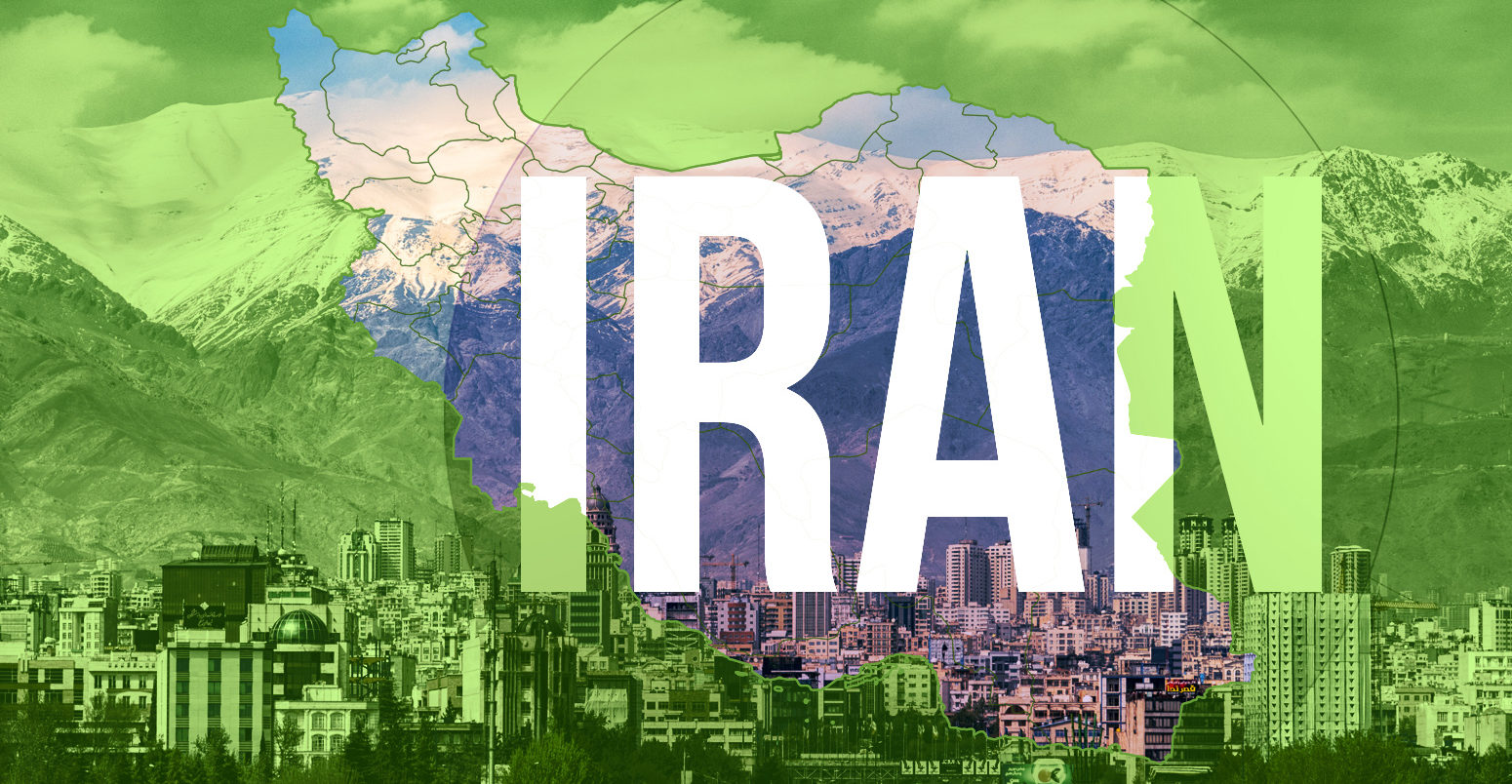
In the latest article in a series on how some of the world’s key emitters are responding to climate change, Carbon Brief profiles Iran, a major petrostate stricken by long-running droughts.
Iran was the world’s eighth largest emitter of greenhouse gases in 2015. It is a resource-rich nation with enormous reserves of oil and gas, as well as considerable renewable energy potential.
However, sanctions have significantly affected Iran’s economy, disrupting oil exports and slowing its transition to a cleaner energy system.
Water shortages, dust storms and air pollution are among the environmental issues facing the country, often driven by mismanagement, but also with links to climate change.
While Iranian leaders have said they view climate change as a serious threat, the nation remains one of only a handful yet to ratify the Paris Agreement.
As tensions with the US escalate once again, Iran has made it clear that any climate action it undertakes will depend on cooperation and assistance from the international community
(Update 24/02/2020: Following a parliamentary election that saw the lowest turnout since the 1979 revolution, conservative hardliners took a large majority in a move expected to weaken President Hassan Rouhani.)
Politics
The Islamic Republic of Iran is a mid-income country home to around 82 million people. Its economy ranks 27th globally in terms of gross domestic product (GDP) and is the second-largest in the Middle East and North Africa (MENA) region, after Saudi Arabia.
Oil is a critical part of the Iranian economy, but has also historically been at the heart of the nation’s struggles.
The election of the nationalist prime minister Mohammed Mossaddegh and subsequent nationalisation of the Anglo-Iranian Oil Company in the 1950s led to the UK and the US overthrowing the government and installing a cooperative regime.
This administration was subsequently toppled in the 1979 Islamic Revolution, triggering the first wave of US economic sanctions against Iran. These have largely persisted ever since, fundamentally shaping the nation’s politics – including its response to climate change.
Iran’s leaders have been outwardly vocal in their support for climate action, while emphasising their nation’s status as a developing country that needs international support to cut emissions.
While the modern Iranian political system involves the election of a president and contains elements of a parliamentary democracy, it is not considered truly democratic.
The president and parliament are overseen by the Guardian Council – consisting of 12 theologians and legal experts – and are, ultimately, answerable to the supreme leader, currently Ayatollah Ali Khamenei. New legislation can be vetoed by the council if it does not tally with the national constitution or Islamic law.
The Iranian parliament has 285 directly elected members, as well as five additional seats reserved for religious and ethnic minorities. The next parliamentary election is due to take place on 21 February and there is a presidential election scheduled for 2021.
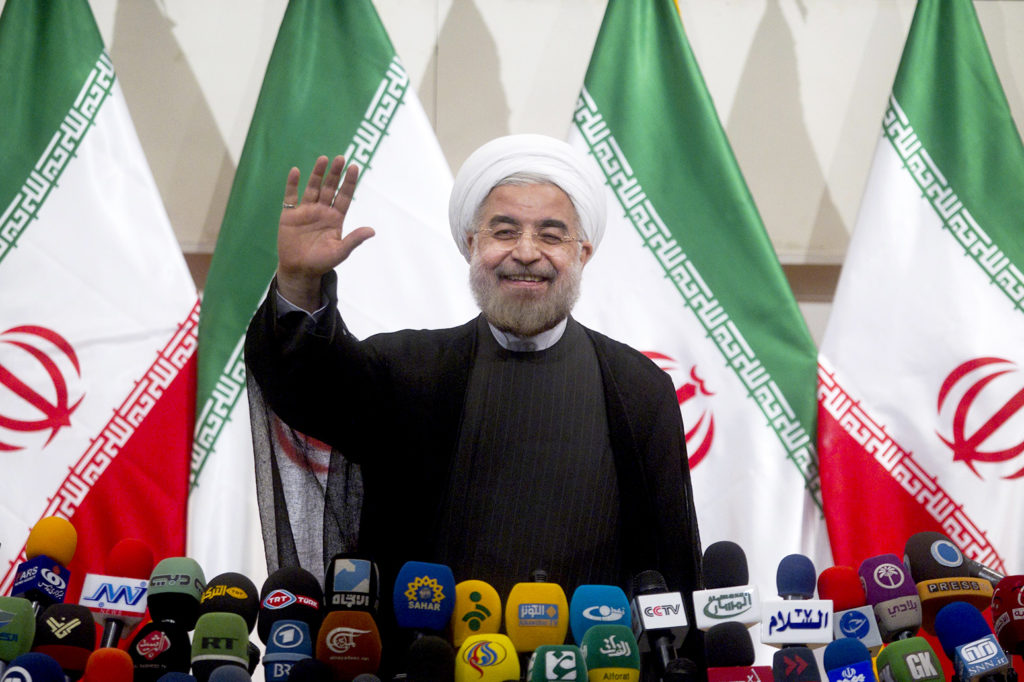
The current president is the relatively moderate Hassan Rouhani, a former nuclear negotiator who was first elected in 2013 then reelected in 2017 with a greater majority. He has described climate change as “one of the most significant challenges of the 21st century”.
Climate change mitigation and adaptation is primarily governed by the National Climate Change Office, which is part of the Department of Environment, a governmental agency overseen by the president. Former department head Dr Masoumeh Ebtekar has called climate change a “serious threat to life on Earth”.
However, as the vast majority of Iran’s emissions come from its energy sector, there are a range of other agencies and ministries that play key roles in climate action, including the Supreme Energy Council and the National Iranian Oil Company (NIOC).
Concern about climate change goes all the way to the top of Iran’s leadership. In 2015, just before COP21 where the Paris Agreement was adopted, Khamenei issued a 15-point list of environmental policy directives, which emphasised the importance of:
“Managing climatic changes, confronting environmental threats, such as desertification, dust particles, drought and microbial and radioactive transmitters.”
The same letter also called for an expansion of the green economy, emphasising low-carbon industries and “promotion of green and non-fossil modes of public transportation”.
Despite promises of reform from the president, human-rights violations are still “rife” in Iran. Among the groups that have been targeted are environmental campaigners, with more than 60 activists and researchers arrested in 2018.
Nevertheless, there has been widespread unrest in recent years partly in response to environmental issues, including the nation’s long-running drought, as well as wider concerns relating to Iran’s economic downturn, a hike in fuel prices and the conservative government in general.
Paris pledge
Iran is involved in international climate negotiations and has signed the Paris Agreement, but it is one of a small number of countries yet to ratify the accord.
While the initial signing signals intent to comply with the agreement, it only becomes binding through ratification.
Only eight countries in the world have failed to complete this procedure, including other oil-producing nations, such as Iraq and Libya.
Iran’s cabinet, headed by president Rouhani, ratified the agreement and sent it to parliament for final approval in 2016, but this has still not been granted and confirmed to the UN secretary-general.
The US, which has officially ratified the agreement, is, nevertheless, in the process of leaving the process altogether. Due to its position as a major economy and long-standing rival of Iran, it could be politically untenable for the Iranian government to ratify if the US is seen as not sharing the burden of climate change.
When participating in international climate negotiations, Iran is a member of the G77 and the Like-Minded Group of Developing Countries (LMDC). Its position in these talks is similar to many of its fellow developing nations and was laid out at COP23 by then-deputy head of the environment department Dr Kaveh Madani:
“Because of their historical responsibility for global warming, the developed countries must take the lead in mitigation and in providing finance and technology to developing countries without shifting the burden onto these countries…developing countries should take responsible climate actions, but not at the expense of their economic and social development.”
Media reports from Iran suggest that while some politicians have called on the president to formally join the Paris Agreement, there are concerns from others that the accord could “act against our national interest” and “put the country into significant expenses”.
Majid Shafie-Pour, a member of the Iranian delegation at COP23, noted the international community’s criticism of US president Donald Trump’s decision to withdraw from the Paris Agreement in an interview with Deutsche Welle. He emphasised the value of cooperation and his government’s desire to “adhere to the climate principles”.
However, at the most recent “intersessional” climate talks in Bonn, Iran was criticised – along with the US, Russia and Saudi Arabia – for trying to undermine discussions around the Intergovernmental Panel on Climate Change (IPCC) special report on 1.5C, emphasising “scientific knowledge gaps”.
Iran remains part of previous international climate treaties. Having ratified the United Nations Framework Convention on Climate Change (UNFCCC) in 1996, Iran also ratified the Kyoto Protocol in 2005.
In 2015, it also submitted an Intended Nationally Determined Contribution (INDC) to the UNFCCC, committing to cut emissions by 4% in 2030 compared to a “business-as-usual scenario”. (This pledge is not an official NDC and has been described as “relatively vague”.)
In addition, Iran’s INDC pledged a 12% reduction below business-as-usual emissions subject to international help, including financial support and clean technology transfer.
The business-as-usual scenario on which the INDC is based includes emissions from the energy sector growing 4.7% annually, from roughly 700m tonnes of CO2 equivalent (MtCO2e) in 2010 to over 1,700MtCO2e in 2030.
However, this assumes a strong GDP growth rate of 8% annually, which has not been the reality since the INDC was published in 2015 (in 2017/18 it dropped to 3.8%). Emissions growth projections under “business-as-usual” may, therefore, be unrealistic.
Crucially, both of Iran’s scenarios assume the “termination and non-existence of unjust sanctions” (see section below). The cost of implementing the full 12% reduction is estimated by Iran to be $70bn, plus an additional £100bn investment in adaptation.
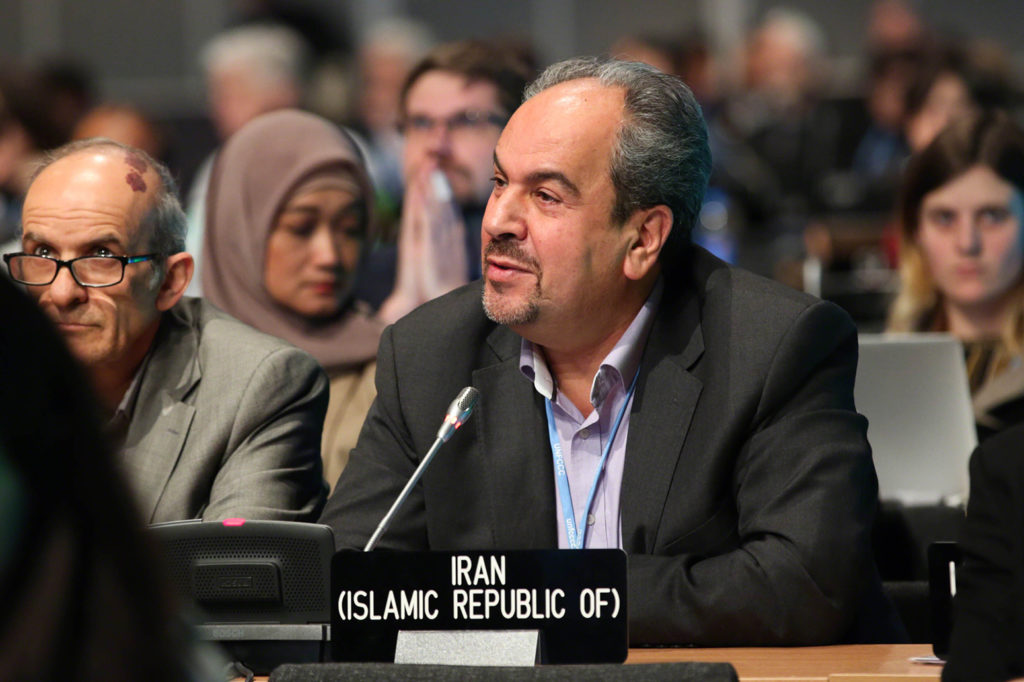
A report compiled for the European Parliament says it is “important to note” that the reduction pledged by Iran “is small compared to the projected increase in emissions”:
“In this regard, it will be interesting to see whether the Islamic Republic of Iran will be able to follow the encouragement of Article 4.4 of the Paris Agreement, which is – for developing country parties – to move towards economy-wide emission reductions or limitation targets over time.”
Analysis conducted by a team at the Wuppertal Institute for Climate, Environment and Energy in Germany concluded that emissions could be cut by 40% by 2030 compared to business-as-usual, by implementing energy efficiency improvements alone. This rises to nearly 50% in a scenario where renewables are rolled out on a significant scale.
Climate policy
Beyond international commitments, climate change action has tended to fall within Iran’s strategies for achieving sustainable development, captured in its “five-year development plans”.
Of the policies introduced so far that have a climate aspect, the majority involve reforms to the energy system, which is by far the biggest source of Iranian emissions.
One key measure included in the fifth five-year development plan, which ended in 2015, was a target to reduce energy intensity by 30%. This is the amount of energy associated with each unit of economic output.
Other important policies have also addressed improvements to energy efficiency, such as the law on energy consumption pattern reform and the subsidy removal plan. (More information on subsidies can be found below.)
There have also been measures to encourage the uptake of renewable energy. These include the budget for purchasing renewable-energy electricity, as well as a feed-in tariff for renewable energy and a financial support mechanism to drive private-sector investment.
However, progress has been slow, according to a report prepared for the German Environment Agency – despite the various laws and policies that have been rolled out to boost energy efficiency and renewables uptake.
The report says reasons for this include the “monopolistic and state-regulated nature of the energy market”, which can hinder market mechanisms, as well as lack of private investment and macroeconomic factors, such as inflation, economic recession and falling oil revenues.
In recent years, Iran has also laid out its overarching climate strategy in the second and third national communications it has presented to the UNFCCC.
In May 2017, the government launched a National Strategic Plan on Climate Change, which it said was developed in line with the Kyoto Protocol and Paris Agreement. Environment minister Ebtekar said the strategy “reflects Iran’s strong political will in achieving sustainable development”. (The document is only available in Persian.)
In a speech at the launch of the plan, UN representative Gary Lewis said by announcing this strategy Iran had become “one of a very small number of countries that is acting in this evidence-based way”.
This plan was originally intended as an appendix to the current sixth five-year development plan, which runs from 2017 to 2021 and does not itself mention climate change.
However, the plan as a whole was not approved by the Iranian cabinet. Instead, a series of mitigation targets for 2021 were brought from it into the development plan.
These targets included an increased share of renewables to 5% of installed generation capacity, cutting overall gas flaring by 90%, decreasing absolute energy consumption in the building sector by 5% and restricting registration of vehicles lower than Euro IV standard. As it stands, it is unlikely Iran will meet its target for clean energy by next year.
Despite many theoretically effective policies, an overriding issue that can hamper their implementation in Iran is corruption, which is prevalent across the economy, including the fossil-fuel sector.
Economic sanctions
Owing to their tight links with the global trade in oil and development of renewable energy technologies, economic sanctions are intrinsic to Iran’s climate strategy and the way it is framed by the country’s leadership.
The sanctions were first introduced by the US after the revolution and have since been implemented by other states, in a bid to curb the Iranian nuclear weapons programme.
These sanctions reached a high point in 2012 when the EU banned Iranian oil exports and the World Bank stopped all oil-related transactions with Iran. This cost the country more than $160bn in oil revenue from 2012 to 2016.
The Joint Comprehensive Plan of Action (JCPOA), struck in 2015 between President Rouhani and several world powers, including the US, saw Iran suspend its nuclear activities in exchange for the lifting of key sanctions.
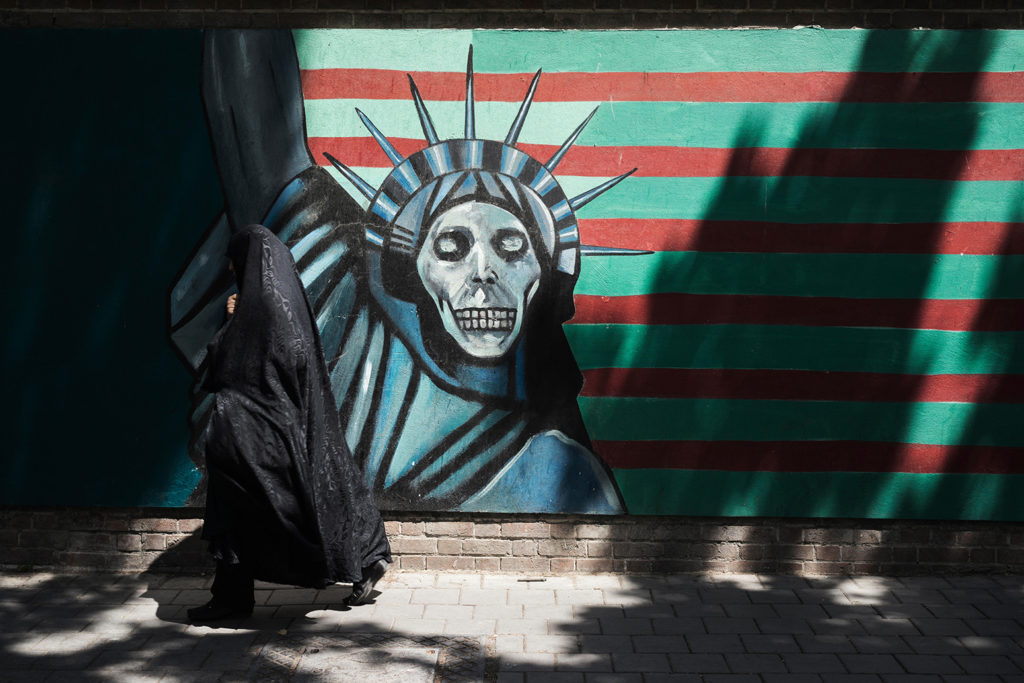
However, US sanctions have since been reinstated under current US president Donald Trump. This has taken a significant toll on Iran’s fossil-fuel sector and wider economy, with oil exports set to fall to half their 2017/18 levels.
The introduction and relaxation of sanctions has already triggered large swings in the nation’s economy over the years and Iranian authorities have made it clear they do not think they can cut emissions with sanctions in place. Iran’s INDC document makes repeated mentions of “unjust sanctions”, stating any climate action on its part depends on their removal:
“This intended program, inclusive of unconditional and conditional participation in mitigating GHGs emission as well as in terms of areas related to adaptation, is in its entirety, subject to the removal of economic, technological and financial restrictions and in particular termination of unjust sanctions imposed on Iran during the past several decades, as well as non-imposition of restrictions or sanctions in the future.”
The same document also says international sanctions prevented the nation from hitting its 30% energy intensity reduction target, set out in its 2010-2015 development plan.
A report on Iran’s INDC implementation from the German Environment Agency cites sanctions as one of the “four overarching barriers to realising Iran’s mitigation potential”, alongside institutional capacities, access to energy-efficient technologies and availability of capital.
Iran’s economic isolation makes it harder to access project financing and technology transfer required to meet its renewable energy goals.
Mostafa Rabiee from the Renewable Energy Organisation of Iran (SUNA – now part of the Renewable Energy and Energy Efficiency Organization, SATBA) has suggested that meeting the country’s renewable targets would require $10bn in foreign investment.
Some have pointed to the links between sanctions and climate action as an argument against the punitive sanctions favoured by the Trump administration.
Mana Mostatabi from the National Iranian American Council (NIAC) writes in a blog post that “climate change provides a rare chance for a positive sum engagement that can yield positive benefits, not only for Iran and the US, but also for an interconnected world increasingly united by a need to preserve our planet”.
Following JCPOA, several European companies secured contracts to build solar and wind projects in Iran, appearing to confirm the boost provided by removing sanctions. (See section below for more information.)
However, lifting sanctions has been also described as a “double-edged sword”, as the resulting stronger economic growth and unrestricted trade in oil could lead to higher emissions.
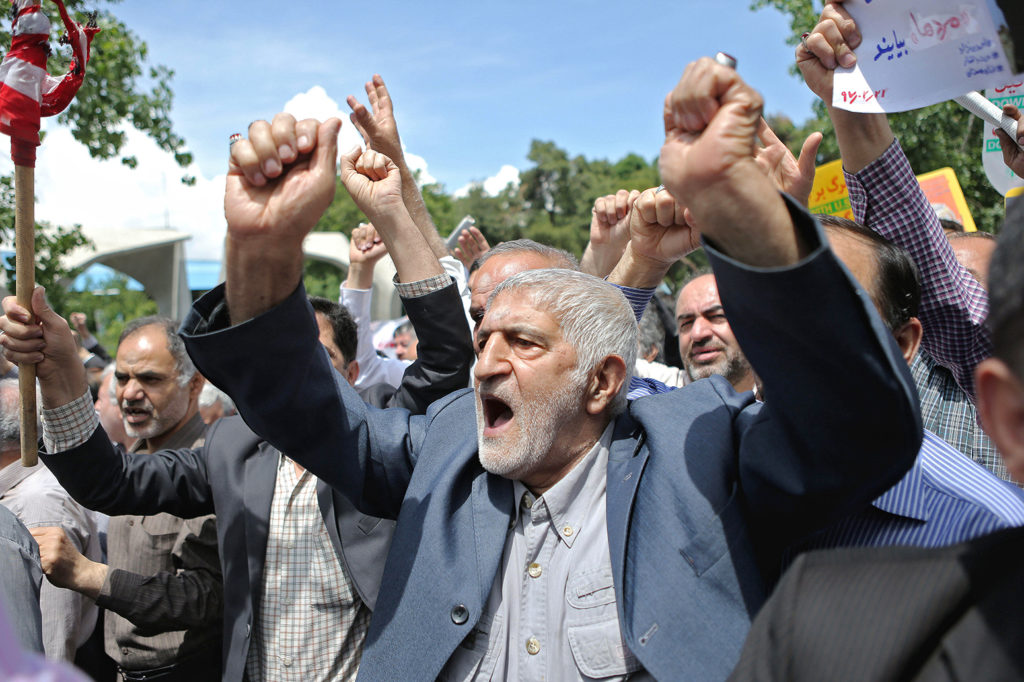
With sanctions reintroduced once again by the US, Iran’s economy was predicted by the International Monetary Fund (IMF) to shrink by 9.5% in 2019, as oil exports fell.
The White House stated the decision to impose tighter sanctions was “intended to bring Iran’s oil exports to zero and deny the regime its principal source of revenue”.
Oil and gas
Iran is an “energy superpower” with significant fossil-fuel resources as its disposal. It ranks second in the world for natural-gas reserves and fourth in proven oil reserves – with 9% of the global total of oil.
(There has been speculation that Iran’s position could shift to third, if the size of a large oil field announced by President Rouhani at the end of last year is confirmed.)
Iran is the world’s seventh biggest oil producer, at around 4.5m barrels per day, and its exports to Asian and European markets make it one of the largest exporters of crude oil in the world.
Around a fifth of Iran’s GDP came from oil, according to Central Bank of Iran figures going up to 2013, although this has been affected by US, EU and UN sanctions on oil exports.
It is a founding member of the Organization of Petroleum Exporting Countries (OPEC), and the state-owned National Iranian Oil Company manages all upstream oil and natural gas projects.
While Iran is one of just three countries in the region using coal, less than 0.2% of its energy mix is from this source.
The chart below shows the dominance of fossil fuels in the Iranian electricity system, with 94% of the nation’s power produced by oil, gas and coal.
Electricity generation in Iran by fuel, 1985-2018 (Terawatt hours). Source: BP Statistical Review of World Energy 2019. Chart by Carbon Brief using Highcharts.As a result of its significant fossil-fuel wealth, energy accounts for more than 90% of Iran’s emissions, according to its INDC, and, therefore, most of the potential for emissions cuts exists in this sector.
According to the IEA, Iran also accounts for around 6% of global methane emissions due to the activity of its energy sector. These high methane emissions can be seen in the infographic at the top of this piece.
Iran’s INDC states:
“Dependence of the national economy on revenues from production and export of oil and its byproducts – that are high-carbon intensive – have made the economy, public welfare, resources and technology of the country, vulnerable to mitigation of GHGs emission.”
The International Energy Agency (IEA) has warned that “producer economies”, such as Iran, that rely heavily on oil and gas are under threat from the combined effect of global climate action, energy efficiency gains and the rise of shale gas in the US.
Iran has a handful of projects, mainly involving improvements to gas power generation, registered under the Clean Development Mechanism (CDM) to produce carbon credits for use under the Kyoto Protocol.
However, one research paper concluded that a “lack of long-term planning for the Kyoto Protocol, limitation of technology and finance, lack of regulation and functionality of a financial system and international sanctions” had held back Iranian CDM implementation.
The Iranian government has previously encouraged the domestic use of gas in order to release more oil for export. While most of the nation’s natural gas is for domestic use, Iran also exports it via pipelines to Turkey, Armenia, Azerbaijan and Iraq.
Particularly since the development of the “supergiant” South Pars gas field, the industry in Iran has grown at an unprecedented rate and gas has become the main source of energy for every sector apart from transport.
However, since the reimposition of sanctions, which have made it harder to export crude oil, there has been a sharp policy reversal as the government encourages domestic oil use to free up gas for export. This trend will likely have knock-on effects for Iran’s emissions profile.
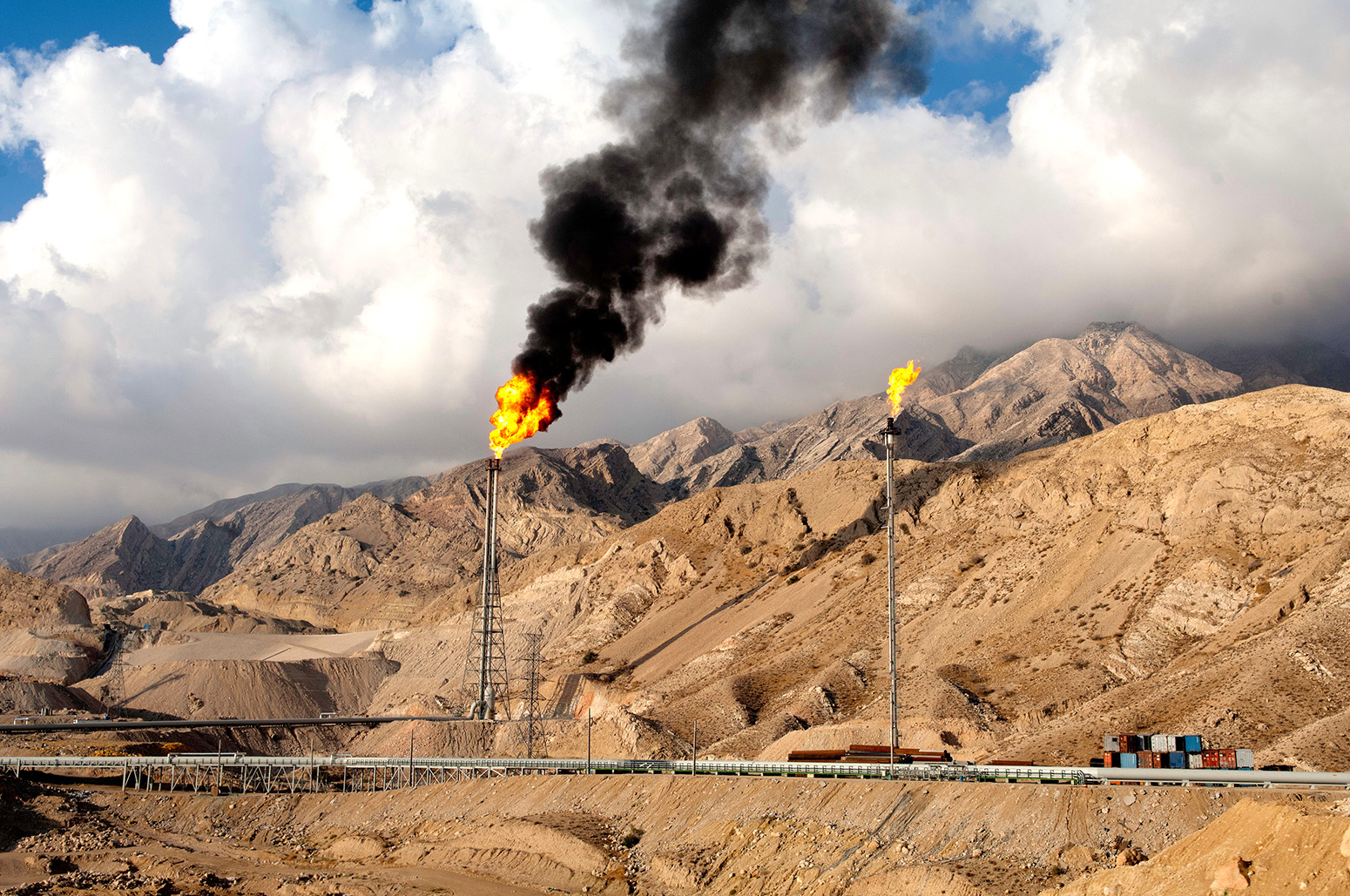
One key issue for the fossil-fuel industry in Iran is gas flaring – the process of burning gas that is released as a by-product during oil and gas recovery.
According to data collected by the World Bank, Iran is the world’s third largest practitioner of gas flaring, after Russia and Iraq, wasting over 17bn cubic metres of gas last year via flares.
While data on this practice can vary considerably, one study from 2016 estimated flaring was responsible for up to 10% of Iran’s greenhouse gas emissions. The government’s third communication to the UNFCCC placed the figure for such fugitive emissions at 19%, the same as emissions from the entire transport sector.
Reducing emissions from gas flaring has been highlighted as a key priority in government communications. The latest five-year development plan targeted a 90% reduction by 2021 and a goal to completely eliminate flaring beyond that date.
Oil minister Bijan Namdar Zanganeh has stated that $5bn is needed to curb gas flaring in Iran, while another government estimate has put the figure for gas recovery projects at $10bn.
However, international funds to help reduce gas flaring, such as the Clean Investment Fund, are not available to Iran. The nation is not a member of the World Bank’s Global Gas Flaring Reduction project, which also provides finance.
Finally, according to the World Resources Institute, Iran’s total transport emissions are among the highest in the world, accounting for roughly a fifth of the nation’s entire emissions profile.
However, with air pollution a major problem in big cities, such as Tehran, cleaning up the transport sector has been a key target highlighted by the government. Only China has more compressed gas-powered vehicles in its fleet that Iran – part of the government’s efforts to make use of its excess domestic gas.
Other strategies to clean up the sector include an upgraded public transport fleet, the promotion of urban traffic management policies and the enforcement of European fuel standards in cities.
Energy efficiency and subsidies
The sheer abundance of fossil-fuel supplies combined with extensive government subsidies has left Iran with rapidly escalating demand for energy from a highly inefficient system.
Its energy intensity is very high, around twice the global average, and its energy consumption per capita is estimated to be 80% above average for the Middle East.
Over the past decade, energy consumption has grown by more than 50% as a result of development, population growth, urbanisation and subsidies. Demand has been growing at a significantly higher rate than the overall economy.
One study described the energy intensity of the nation’s industrial production as “unacceptably high” – four times the European average and almost nine times that of Japan.
Iran has had a direct subsidy system to reduce the price of fuel, and some food, in place for decades. Estimates for the scale of energy subsidies in Iran have varied significantly, but they are frequently cited as the largest in the world. The IEA estimates they account for around 15% of the nation’s GDP.
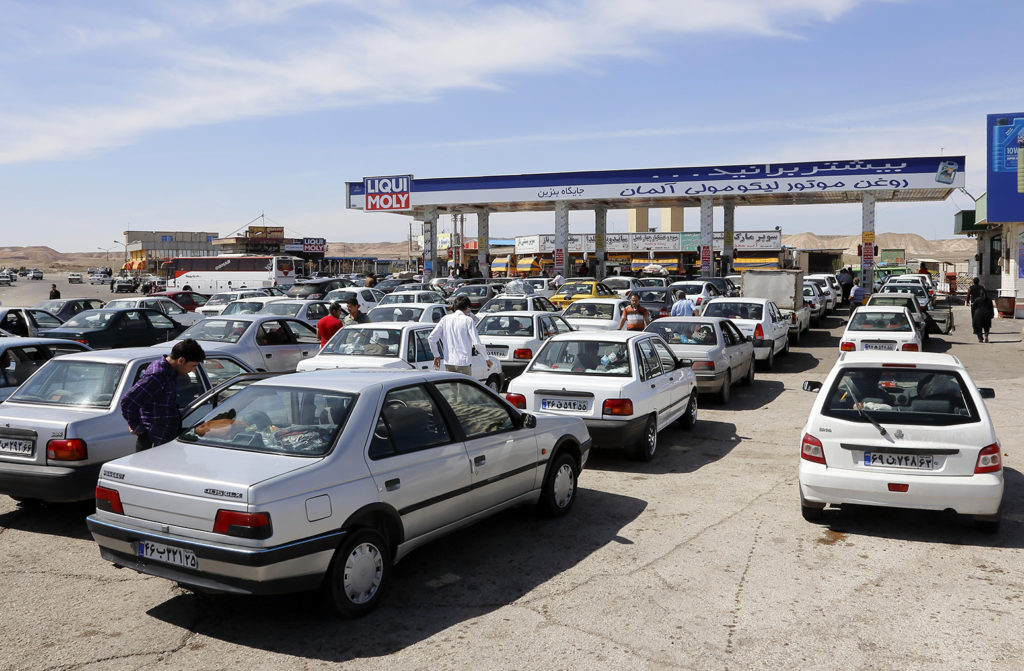
By way of comparison, according to the IEA’s analysis for 2018, Iran spent $26.6bn on oil subsidies and $26bn on gas subsidies, compared to Saudi Arabia’s $25.8bn and $6.2bn, respectively.
The agency has noted that “phasing out fossil-fuel consumption subsidies remains a pillar of sound energy policy” and that highly subsidised fossil fuels in the Middle East have hindered the development of renewables in the region.
Iran’s problem is most evident in its treatment of gasoline, which received around one third of subsidies in 2010. The resulting low prices have encouraged very high consumption in urban areas and contributed to serious air pollution in major cities.
In a bid to reverse this trend, the government has been pursuing subsidy reforms in its five-year development plans, gradually raising the prices of petroleum products, natural gas and electricity.
Subsidy removal is seen as important for achieving energy efficiency and, according to the government, is intended to drive equality by replacing the subsidies with targeted welfare payments to poorer people.
However, the policy has faced difficulties and public backlash, leading to violent crackdowns and parliament delaying its second phase. A recent overnight 50% hike in petrol prices once again sparked widespread protests.
Since the subsidy reform programme began in 2010, renewed sanctions and the collapse of the Iranian currency, the rial, mean that Iranians are not actually paying much more today than they were at the outset and fuel usage has not changed substantially.
IEA data shows fossil-fuel subsidies in Iran fell from $92bn in 2012 to $31bn in 2016 before doubling again to $69b in 2018, in line with shifts in the global crude oil price.
A 2015 paper by Dr Saeed Moshiri at the University of Saskatchewan concluded that Iran’s “current policy of price increases would not solely be able to reduce energy consumption”.
Renewables
Iran is powered almost entirely by fossil fuels, but it is widely agreed that given the right opportunities and investment, it has enormous potential for renewable energy.
The nation has been described as “potentially one of the best regions to use [solar] PV systems” due to its high number of sunny days and levels of solar radiation.
There are significant opportunities for the development of Iranian wind power and geothermal energy also has potential across the Middle East region, including Iran.
While there have been some policies in recent years to encourage renewable development, progress has been slow. As it stands Iran only gets around 0.1% of its power from non-hydro renewables, such as wind and solar.
Noting its commitment to 5% renewables capacity, the government has laid out its position:
“Iran’s macro planning on energy is optimised utilisation of fossil fuel resources and improvement in exploitation of diversified resources of renewable energy to supply a portion of the country’s ever increasing energy demand.”
The government’s fifth development plan pledged to install 5 gigawatts (GW) of renewable energy capacity by 2015, by incentivising private companies to invest in the sector. (This included small-scale – less than 10 megawatt, MW – hydro projects and not large hydro, which is relatively well-developed.)
This was dismissed as “too ambitious” in a report by law firm CMS, given the sector’s lack of development and international sanctions and, indeed, the target was not met.
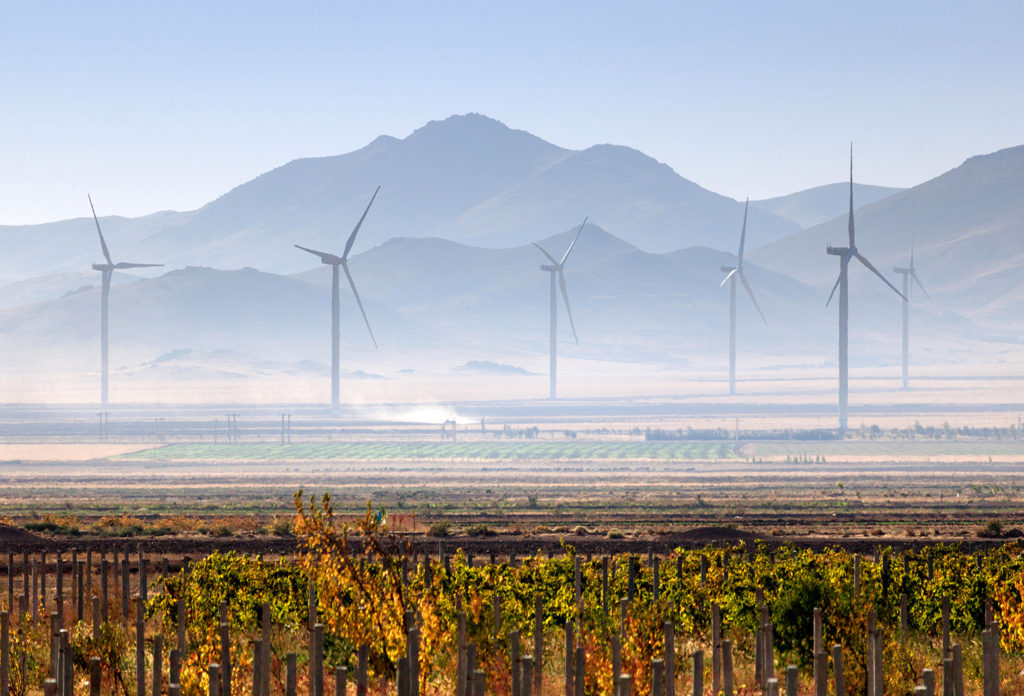
Since then, Iran’s sixth development plan, which ends next year, once again aims for 5GW of renewables and plans for an additional 2.5GW by 2030. Furthermore, the Iranian Power Generation, Transmission, Distribution and Management Company (TAVANIR), has predicted renewables could provide 10% of Iran’s electricity by 2021.
However, difficulties with financing projects and lack of local expertise remain major barriers to the development of the sector.
When sanctions were eased following the nuclear deal in 2015, there was a surge of interest from European companies seeking to build new renewable projects in Iran.
According to the Climate Institute, within around two months after the JCPOA was agreed, the nation had organised deals that would have seen its solar capacity increase by 1,150MW. This is compared to the period from 2005 and 2011, when this capacity increased by just 14MW to 67MW in total.
A Reuters story from 2018 notes that prior to Washington reimposing sanctions, “more than 250 companies had signed agreements to add and sell power” from renewables in Iran.
However, with President Trump threatening to penalise companies doing business in the country, international companies began pulling out. UK renewable energy investor Quercus announced it would stop the construction of a large, $570m solar power plant, specifically citing “US sanctions on Iran”.
While the Iranian government has signalled it wants to diversify its energy mix, there are also some doubts about its commitment to clean energy. One report from 2018 notes that while renewable energy’s importance is now “routinely acknowledged” in Iran, authorities still do not view it as a priority and “a comprehensive plan for renewable energy is lacking”.
Nuclear and hydropower
While Iranian wind and solar have so far failed to take off in any significant way, two other forms of low-carbon energy – hydropower and nuclear – have had marginally more success making a dent in the dominant fossil-fuel sector. Nevertheless, both have faced barriers.
In an assessment of different energy sources in the Middle East and North Africa (MENA) region, one study concluded that nuclear is a “highly desirable” alternative to fossil fuels, while noting its very low deployment across the region.
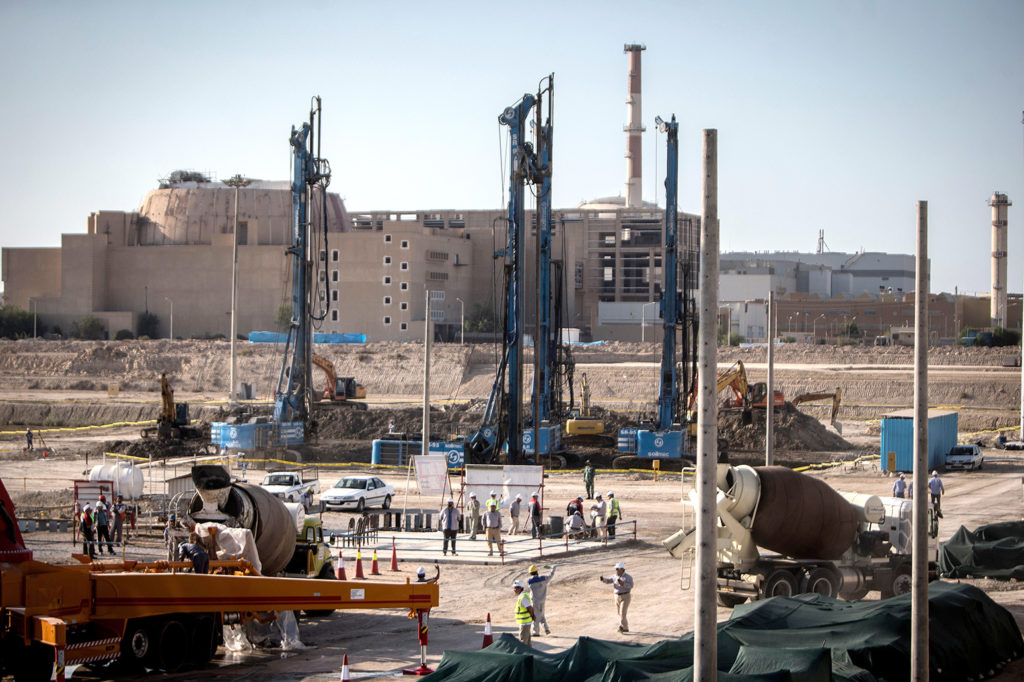
In fact, Iran is the only MENA nation to have constructed a nuclear power plant – the Bushehr 1 facility, completed in 2011. It will soon be joined by the United Arab Emirates, which is expected to complete its first plant by the end of 2020.
Bushehr 1 has 1GW of capacity, and with the help of Russia, Iran is aiming to construct Bushehr 2, with an additional 1.8 GW of capacity, by around 2026.
Besides technical issues with expanding nuclear, the same study cites “the lack of trust of the global community towards the misuse of nuclear resources” as one of the major barriers to Iran’s nuclear power.
For more than a decade, sanctions against Iran have been enforced specifically in a bid to stop the nation developing nuclear technology.
While Iran has maintained that its nuclear programme is for peaceful purposes, the Trump administration is concerned that allowing it to enrich uranium could fuel the development of nuclear weapons. Iran is now enriching uranium at levels above those agreed in the 2015 deal, following the US withdrawal, but the material used in Bushehr is sourced from Russia.
By comparison large-scale hydropower is relatively uncontroversial in geopolitical terms, but in a region beset by severe water scarcity it comes with its own problems.
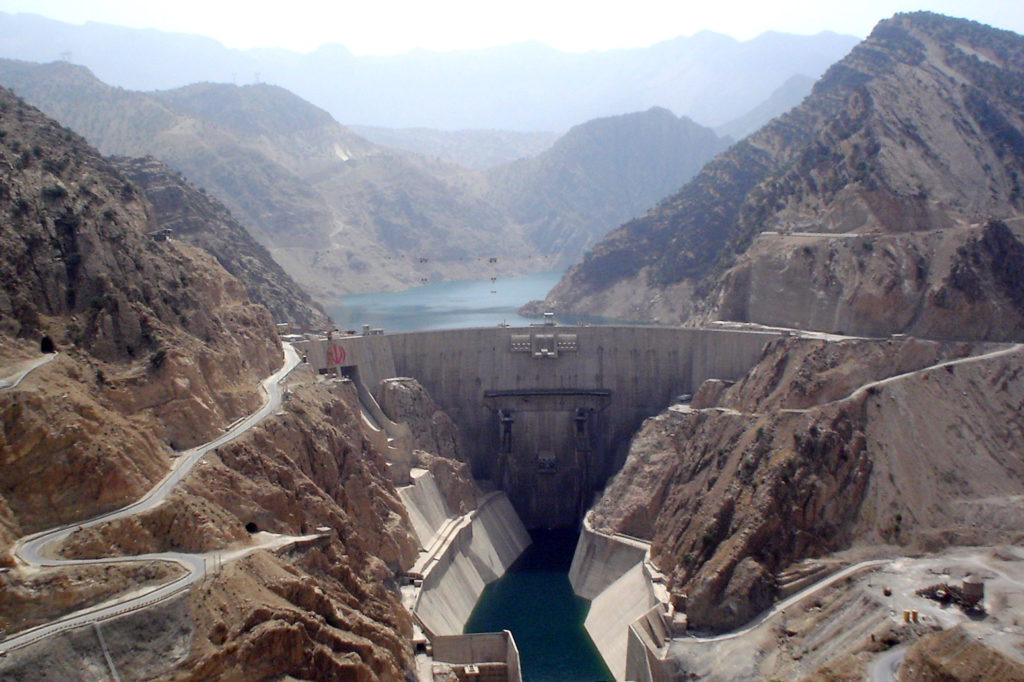
Despite this, it is by far the largest renewable energy source in Iran, currently providing around 3.5% of the nation’s electricity. According to the International Hydropower Association, as of 2015 there was around 11GW of installed hydro capacity in Iran.
However, Iranian officials have warned that protracted droughts are affecting the nation’s hydropower capabilities.
“Because of the water shortage, there are predictions of hard times for Iran’s power industry,” deputy head of Iran’s power generation and transmission company, Gholamreza Khosh-Kholq, told news outlets in 2015, referring specifically to the nation’s hydropower.
Drought and adaptation
Iran is highly vulnerable to the effects of climate change. Average temperature rise compared to the pre-industrial baseline is already 1.8C, one and a half times the mean global temperature rise.
The Iranian leadership has made it clear it is aware of the threats Iran faces and there are suggestions that climate change adaptation is seen as a priority over mitigation efforts.
Iran’s INDC lists cuts in agricultural production, dust storms, harm to biodiversity and “heat exhaustion and the spread of some diseases” among the dangers stoked by climate change.
It also states that agriculture and the wider economy will face $3.7bn in damages every year from 2015 to 2030 compared to 2010 “due to the changing trends of climate change and hydrological parameters”.
Drought is, perhaps, the most serious environmental issue facing the country. Iran has struggled with water shortages for decades and as of last year, around 97% of the country was experiencing drought conditions.
As a result, thousands of villages have been deserted and officials have predicted that millions more people will be displaced. Climate change is expected to make this problem worse, with research suggesting precipitation will fall in the coming years.
Given what they viewed as its lack of inclusion in climate change negotiations, the Iranian delegation at COP24 in 2018 called for water scarcity to be incorporated into proceedings.
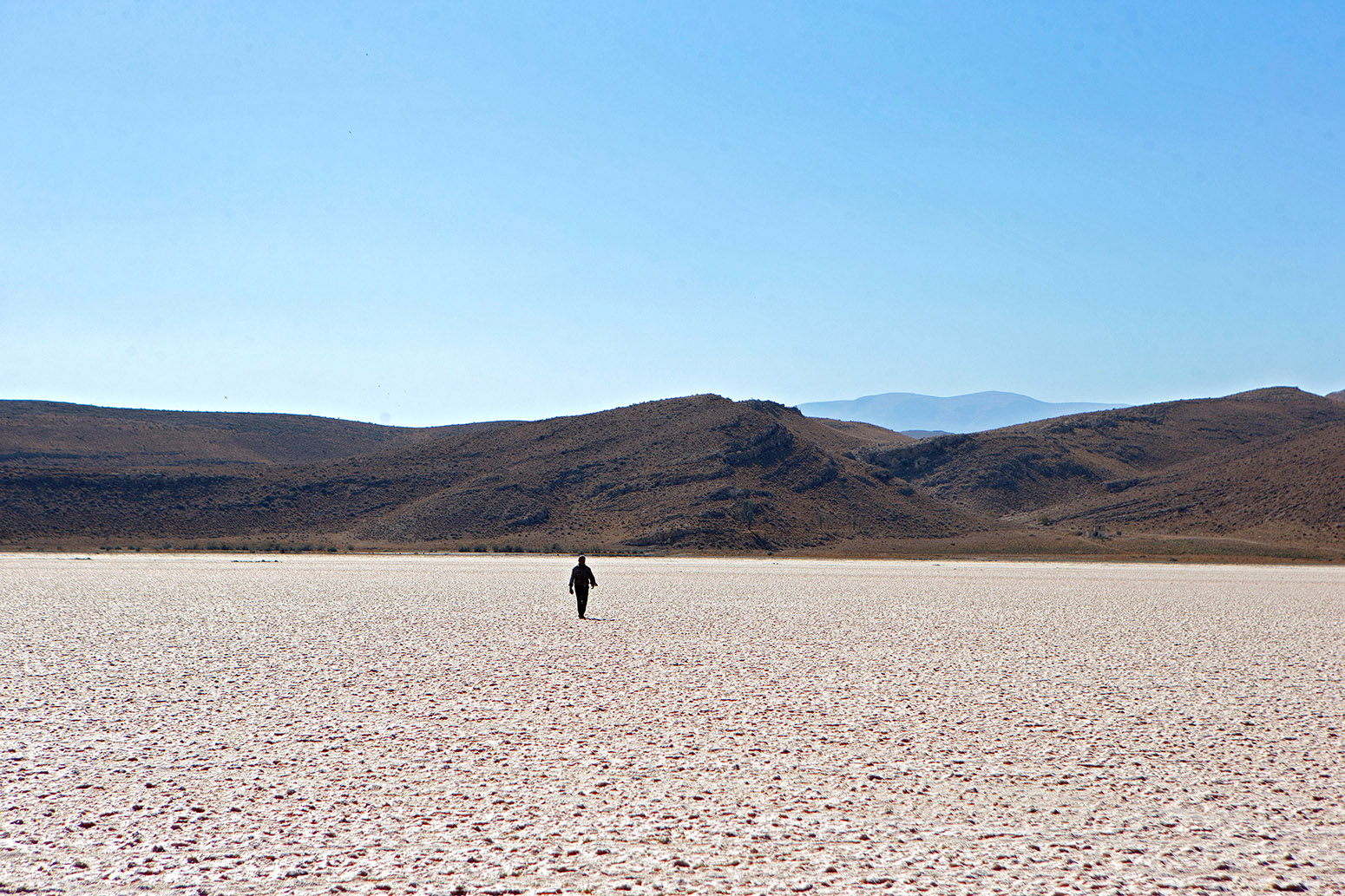
However, aside from climate change, this issue has also been driven by mismanagement in Iran, with excessive use of water in the agriculture sector and a push to construct dams on some of the nation’s major rivers.
Indeed, while the link between climate and water shortages is clear, experts have pointed out that it is wrong for the Iranian authorities to shift the blame to global warming, as one paper concludes:
“Natural climate variabilities, climate change, droughts and economic sanctions have had undeniable impacts on Iran’s water resources. Yet Iran’s water problems are mostly manmade and the product of decades of poor management caused by lack of foresight, uncoordinated planning and the wrong perception of development.”
Current environment minister Isa Kalantari told AFP in 2018 that the country faced losing 70% of its farmland in the coming decades, noting in the past “we basically thought that environment was not that important”.
The National Climate Change Office conducted a vulnerability and adaptation assessment in 2014 and incorporated it into its third national communication to the UNFCCC.
As with emissions mitigation efforts, the government has emphasised the need for “additional international financial resources and technology transfer” to help prepare its water and agricultural sectors for a changing climate.
Note on infographic
Data for energy consumption comes from BP Statistical Review of World Energy 2019.
Data for greenhouse gas emissions by sector is a combination of two datasets compiled by the Potsdam Institute for Climate Impact Research (PIK) and EDGAR.
Values for methane (CH4), nitrous oxide (N2O) and fluorinated gases cover all sectors, including LULUCF, and come from the PIK primap database v2.0. Values for GHG emissions from LULUCF also come from the PIK primap database, however these are only available to 2015, from the earlier v1.2 of the database. Note that LULUCF data for 2015 is an extrapolation made by PIK from previous years.
The remaining values come from the EDGAR CO2 emissions database, downloaded from the website OpenClimateData. The EDGAR categories described in full are as follows: Buildings (non-industrial stationary combustion: includes residential and commercial combustion activities); Transport (mobile combustion: road and rail and ship and aviation); Non-combustion (industrial process emissions a1nd agriculture and waste); Industry (industrial combustion outside power and heat generation, including combustion for industrial manufacturing and fuel production); Power & heat (power and heat generation plants).
Combining GHG emissions in 2015 (bar LULUCF) from PIK primap database 2.0 database and LULUCF emissions in 2015 from PIK database v1.2 also shows Iran has the world’s eighth largest greenhouse gas emissions, including LULUCF, in 2015.
Per capita emissions in 2015 come from combining the above 2015 figure for GHG emissions and Iran’s population in 2015 from the World Bank.
Iran’s pledges to reduce its emissions by 4% by 2030 relative to business as usual, or 12% conditional on international support, come from its INDC submitted to the UN in 2015.
Infographic by Tom Prater for Carbon Brief

